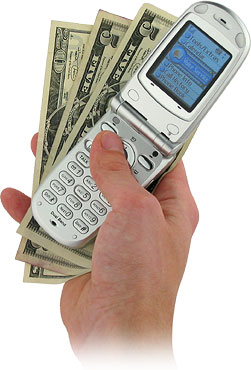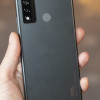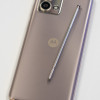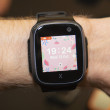Prepaid Exposed
Nov 4, 2003, 7:00 PM by Carlos Espinal
Special report. Everything you wanted to know about prepaid wireless but were afraid to ask.
Page 1
Prepaid services have changed since this article was published in 2003. It is not updated to reflect current prepaid offerings.

The goal of this article is to compare North American carriers' prepaid plans. This article sets out to cover the differences in pricing structures of major North American Prepaid options, and compare them to each other and to, what I believe to be, an ideal plan. This article is not geared to be an analysis of carrier network quality or coverage.
Prepaid plans have been around for a long time. They have had many different faces, from the old school public phones that take coins, to the latest prepaid wireless plans. However, because the nature of telecommunication services is constantly changing, the old prepaid model is not necessarily one that fits well into modern day wireless services.
The need for wireless prepaid plans stemmed mainly from three groups of users that wanted to have standard wireless service but could not obtain it or did not want to be bound by a contract. Poor credit ratings are the main culprit behind people not being able to qualify for traditional monthly plans. Transients, as in those not planning on remaining in the area long enough to be bound by a contract (e.g. Tourists) are the second group, and lastly potential customers that simply disagree with having to be bound to a wireless contract make up the last group. Because of these groups of people, wireless companies started releasing prepaid plans, but reluctantly so, for they aren't always the most desirable (and lucrative) type of customer for a carrier to have.
The prepaid customer is one whose annual revenue for the company can't be accurately predicted. In some cases, a prepaid customer may only use the phone on occasion, and others, frequently enough to cover the cost of his subsidy, the subsidy of others, and still provide some revenue.
This brings us to the topic of phone subsidies. Phones, and their sales prices are traditionally subsidized for initial buyers of wireless services. This is to provide a lower entry price point for new customers. Phones straight from the factory are actually quite expensive. That phone you might be getting for free or for $50 from the carrier may have actually cost the carrier around $200 or more. The carrier needs to make this money back. Thus prices for plans need to reflect that subsidy. In general, the three factors that contribute to the pricing of Prepaid Plans are:
- The Phone subsidy that is required to price the new customer kits at a reasonable entry price.
- The uncertainty of a consistent revenue flow from individual prepaid customers.
- The costs of having to design a wireless infrastructure and customer service employee pool to service an unpredictable number of prepaid customers, far and above of the scheduled monthly contractual customers.
Because of these factors, prices are, and will continue to be, higher for prepaid customers than for regular customers. As we will see in the following sections, price is something that will vary quite a bit from carrier to carrier. Subsidies aside, the pricing of prepaid plans are also based on the quality of the network coverage (and the expense that it was for the carrier to make the network), the services offered to prepaid customers, and the cost of the actual phone that is bundled with the starter packages.
The variables when choosing a prepaid plan are just as many as when selecting a regular monthly plan. You still have to make sure that the carrier has coverage where you plan to use it, you have to make sure that the plan covers your communication needs (voice, data, texting, or all of them), and whether the pricing makes sense to you. The combination of these variables can seem daunting to the uninitiated, thus the following quick summaries of the carrier's offerings set out to shed some light on the subtle differences between the options.
Verizon
Verizon's prepaid plan is called FreeUp. It includes text messaging, caller ID, voicemail, and long distance. The way it works is actually rather simple, and is close to my 'ideal plan' that I will explain later.
In order to start using your prepaid phone, you buy a prepaid kit, which includes the phone and a card for some dollar amount of credit. Then you use this dollar amount and/or subsequent dollar amounts you add via ReUP cards, to pay for your usage. They have differing rates for weekday minutes (most expensive), Mobile to Mobile minutes, Night and Weekend Minutes, Text messaging, Off-Network roaming, and international. All these rates are automatically debited from your card amount.
The biggest disadvantage, in my opinion, to Verizon's prepaid service, is its cost relative to the others. It's not the cheapest by any means. In addition, they, along with all the other carriers, have set expiration dates for minutes you buy, so if you buy a card to ReUP your phone, you still have to use them within an allotted period, or they'll expire. This period varies by the dollar amount of your refill card. In addition, I don't quite appreciate that Verizon doesn't offer their prepaid customers access to their Express network as of yet. The Express network is Verizon's 1xRTT network that allows for phones, or data cards to have data at speeds around 60Kbps. What would have been nice is if you could buy a prepaid data card for your laptop, for example, so that only when you were going to travel would you have to pay for the service (via prepay), rather than having to be bound by a contract.
For more information go to:
T-Mobile
T-Mobile is a curious case when it comes to prepaid. It has historically had a lock on all foreign tourist traffic, roaming or via prepaid, because of having the largest GSM network in America, yet they choose to limit how they can make money on their prepaid options.
For example, you cannot 'formally' buy a SIM card from T-Mobile in order to have prepaid service with them. Yes, there are several shops that will sell them to you without a phone package, but they're not supposed to do that. Those stores typically dissect the prepaid packages and sell the SIM and phone separately. Additionally, T-mobile will not allow their prepaid customers to use the GPRS network, nor do they offer any prepaid services (easily found) on their website.. It's almost like they have disdain for the prepaid customer.
However, if you're used to GSM service, and you're only here in the USA for a short period of time, T-Mobile still has the largest GSM network in America, with AT&T and Cingular quickly catching up.
Page 2
AT&T (Go Phone)
The goPhone from AT&T is a different spin on the prepaid model, in that it really is just a regular plan, but there is no year contract. In other words, you can bail at any time, but you are charged for the month much like you would be with a regular plan. This means that you need to have a debit card, a credit card, or a bank account number for the automatic charge option. Although this would be fine for most people out there, there is a subset of people that do not have this as an option unless if they pay up front for their month via cash or other means.
AT&T's plan is one of the few that includes a data service as part of their 'pre-paid' offering. In this case, if you choose the GoPhone plan with mMode, you end up paying slightly more than without it, but that's a reasonable expectation. In addition, AT&T offers an add-on option of unlimited Night and Weekend minutes.
(section updated 11/7 to mention cash payment option)
For more information go to:
http://www.attwireless.com/gophone/
Cingular
Cingular offers two types of prepaid plans. The Nights and Weekends plan and the Unlimited Weekends Plan. The main difference is the cost of the minutes per plan. Peak rates and Off-Peak rates differ. The Unlimited Weekends Plan does charge extra to call outside of the local area where you bought the phone. Text messaging rates differ between the plans, and some additional features differ. Cingular's plans also offer an automatic refill of prepaid minutes. Go to the Cingular website for more on the details of each plan:
In many ways Cingular's plans are a hodge-podge of other carrier's plans. However, they do lack data options on the plans, even though some of the phones that they offer as part of the prepaid plans are data capable.
For the record, Cingular and T-Mobile do share networks, at least in the California and New York areas, and have roaming agreements in other areas.
Virgin Mobile
Don't be fooled with the name, Virgin Mobile is really Sprint, or at least in the sense that Sprint is really the network upon which Virgin relies for call termination. The marketing departments, customer service, product offerings are different and separate. So if you have opinions about the quality of service of the Sprint network, for good or for bad, they'll apply to Virgin as well, but your experience dealing with customer service will be exclusively Virgin's, and not Sprints.
Aside from the catchy name and some aggressive pricing, the plans offered by Virgin Mobile aren't radically different from those offered by Verizon. There are no data plans available, and text messaging has a rate of its own.
The only odd thing worth mentioning is that Virgin's rates aren't based on time of day, but on duration of the call. As of the writing of this article, when you initiate a call, it starts off at 25 cents a minute, and then decreases to 10 cents a minute after 10 minutes.
For more information go to:
http://www.virginmobileusa.com/
Boost Mobile
Again, don't be fooled by the name, Boost Mobile is really just the prepay version of Nextel's service. It utilizes the same network and technology, and also seems to share the same high prices as Nextel, but like with Virgin, the administrative functions are separate, and your experience will not be with Nextel, but with Boost Mobile.
Boost Mobile has a flat rate plan. Meaning that all calls during the day are a certain rate, as opposed to Verizon's service, for example. Of course, since this rate is an average rate, you might have a cheaper rate than other carriers during peak hours, but in off peak hours, you'll be paying more than you would be on other carriers.
Because of Nextel's walkie-talkie technology, Boost Mobile is the only prepaid plan that offers you a walkie-talkie option. Boost was smart enough to make this an attractive feature as well, by pricing it cheaply, and by unlimited usage per a daily charge. Not a bad pricing structure at all.
Of all the carriers, Boost, along with AT&T's goPhone are the only ones with an explicit reference to being able to use data on the phone (WAP). However, Boost offers theirs at a (more) reasonable price, in my opinion, for unlimited usage per day.
For more information go to:
http://www.boostmobile.com/home.html
Page 3
Summary and Comparison of Plans
Of all the plans, I have to say that Boost Mobiles in some ways is the most innovative, even if their initial prices are high (to start service), for their phones are not cheap. However, AT&T's GoPhone is a great alternative if you want to have something that is reasonably priced but requires you to either keep your account active by depositing credit into it, or by having it automatically debit from a designated source (credit or debit card, for example). Otherwise, Verizon is a good alternative for those without a good credit history. Although coverage areas vary by region, it is safe to say that Verizon has the largest coverage of all the prepaid options, and is reputed to have the best quality network. As usual, however, your mileage may vary.
Now, onto what I would consider to be the ideal plan. Although everyone has an opinion on what the ideal plan would be for them, I believe that the simplest ideal plan is one that allows you take advantage of all the carrier's features through a debit type system. Some carriers treat prepaid customers as second-rate citizens and don't allow them to enjoy all of the services they offer. I think that this approach is unwise, for it alienates the prepaid customer and reduces the ways that the customer can bring in revenue for the carrier.
What carriers should do instead is just charge different rate for the different services on a debit basis, very much like the Verizon plan does, but without the expiration dates, and with access to all the services. Essentially, you buy a prepaid amount, and minutes cost you x-amount per minute, data y-amount, and anything else a z-amount. Boost Mobile's option of having a flat rate for unlimited usage per day of a service is nice as well, provided that the daily fee isn't too high.
T-Mobile, for example, does not allow you to use MMS or GPRS with their prepaid options. They just allow you to use voice minutes, and you buy a card that is set at a quantity $10, $20, etc.. So, if you're coming from Europe, have a fancy MMS phone and want to send a picture back to your parents... too bad. Oh, and while you're at it, if you weren't fortunate enough to find a dealer that will sell you just the SIM card, you now own a spare phone too.
The next point I would consider to be essential to an ideal plan would be a way to allow customers with a credit card to just have minutes billed to them at the prepaid rates, much like AT&T's goPhone. Presumably if the person has a credit card to begin with, the Carrier is no more at risk than any other merchant that takes credit cards. Sure, there is a risk of default, but it's no higher than that of regular customers.
Lastly, the ideal plan would not have expiration dates on prepaid minutes. You are already paying a premium on the minutes because of the subsidy and because of the limited revenue you will provide the carrier, so you might as well be able to keep your overpriced minutes for as long as you want.
In conclusion, Prepaid plans are not cheap. They set out to target that set of customers that don't have a great credit history, or those customers that for whatever reason cannot be bound by a contract.
The biggest determinant in your decision to choose any plan should be coverage. Sometimes it's worth an extra buck if it means that you'll be able to use your phone when you want to. Make sure to investigate the coverage areas of the carriers in your area before jumping onboard. Ask friends, and ask the store you are buying from if there is any way you can test coverage in your area.
After coverage, features included within the price and the price itself should be your main concerns.
Lastly, and I know that for many of us, we might be tempted to make this the number one priority, the phone itself should be the last priority. While the phone will play a large part in your reception of the coverage area, it should not be so much of a concern that you willingly pick one carrier over another only because the phone is cuter. You'll regret that decision when you see your friend with the ugly phone actually being able to use it, while your cute phone says 'no signal'.
Carlos Espinal is the Editor of Chromewalker.com.
Phonescoop does not endorse any of these wireless carriers or their products. All products and comparisons drawn in this article are for your reference only, Mileage may vary. Quality of service will vary by location and region, so please check your options and their performance before deciding on something. Pricing plans were compared for the New York area; rates may vary according to your location.


 Hands On with the TCL 20 XE and TCL 20 A 5G
Hands On with the TCL 20 XE and TCL 20 A 5G
 Samsung Refreshes Galaxy S Series with S Pen, New Cameras
Samsung Refreshes Galaxy S Series with S Pen, New Cameras
 TCL's New Foldable Concept Swings Both Ways
TCL's New Foldable Concept Swings Both Ways
 iPhone 14 Plus Offers a Big Screen For Less
iPhone 14 Plus Offers a Big Screen For Less
 Hands On with the moto g stylus 5G (2023)
Hands On with the moto g stylus 5G (2023)







